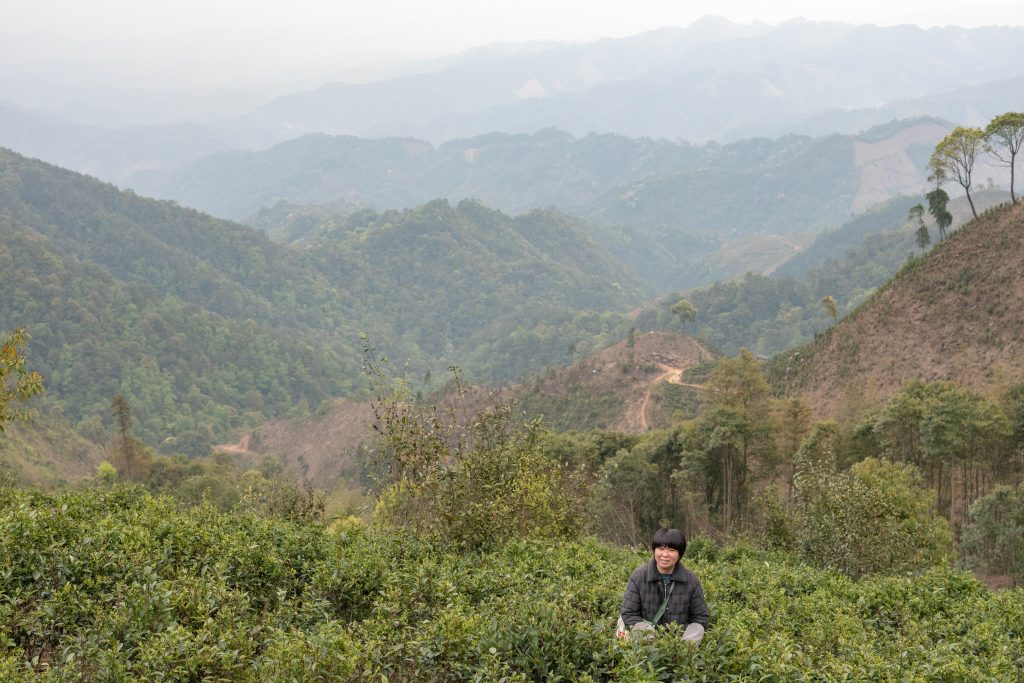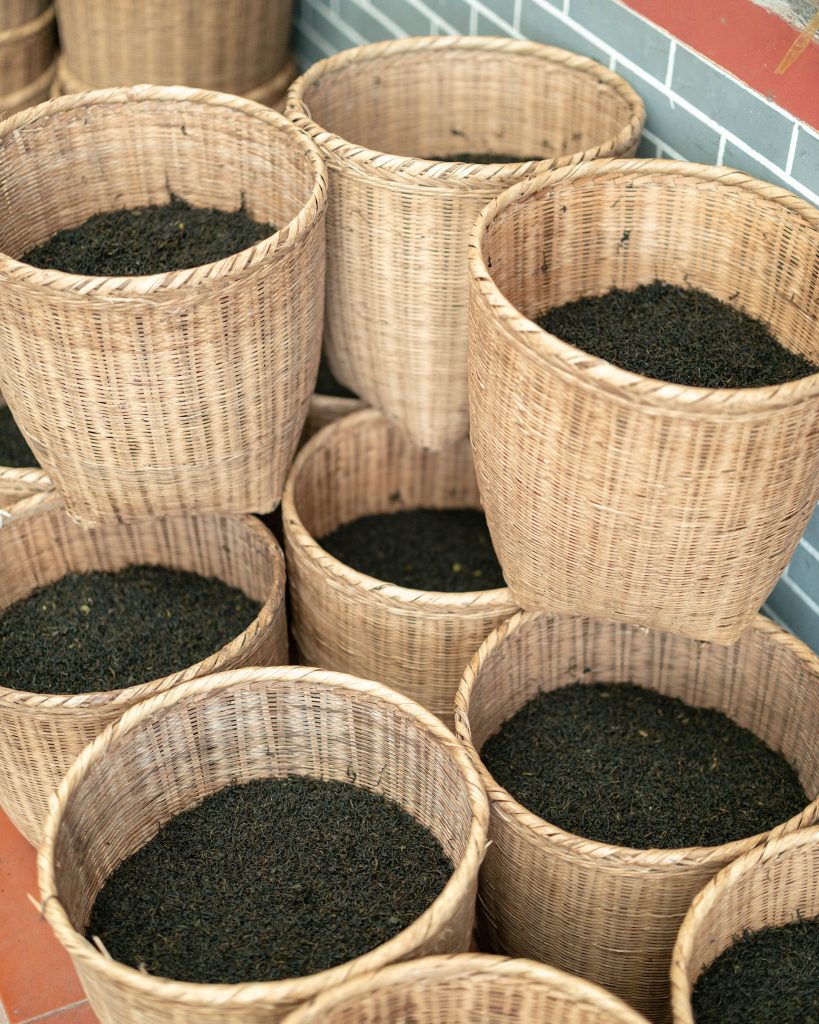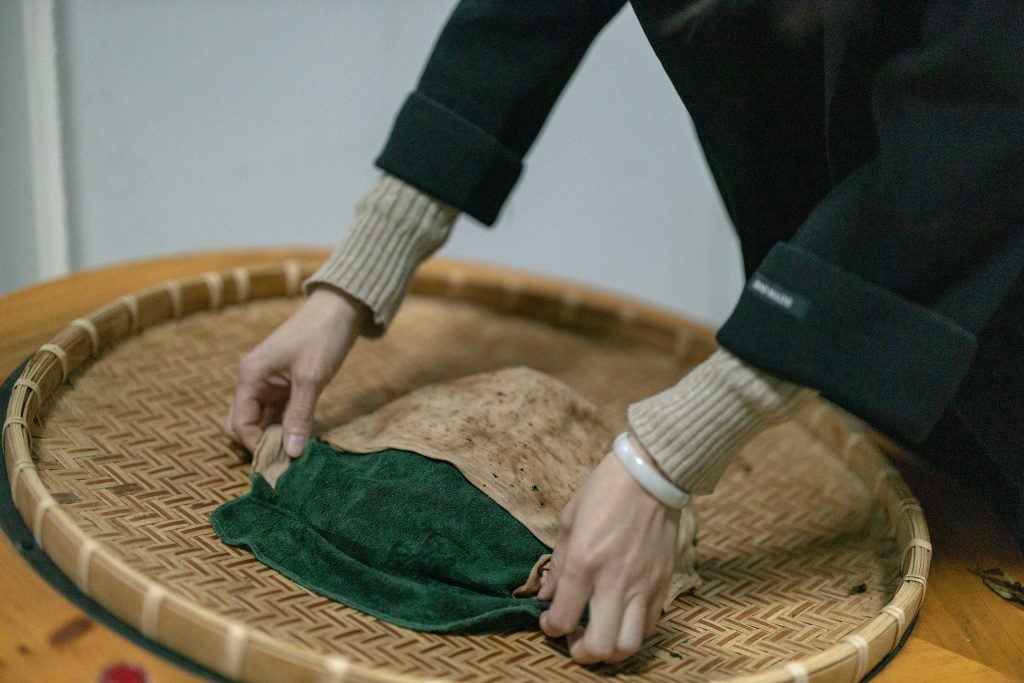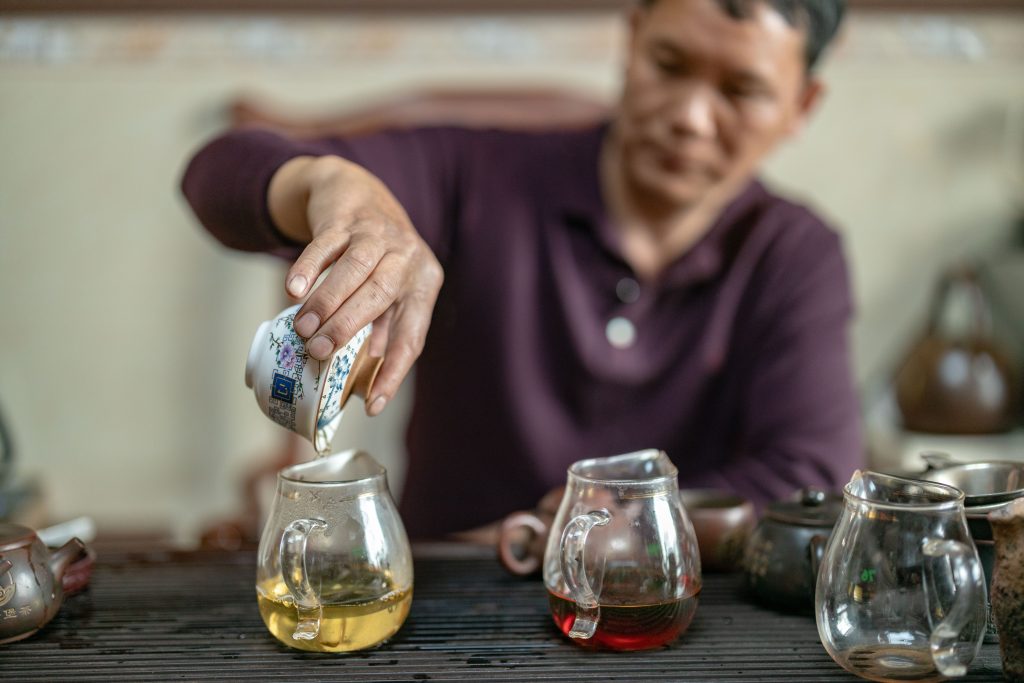$18.00 – $42.00
This is the fresh, unaged, sprightly green-yellow version of a dark heicha famously cellared and long-aged to foster tea characteristics on the opposite end of the spectrum. This less-studied, deep cut iteration is akin to wily, year-of raw pu'er in the world of Liu Bao.
A treat for appreciators of zingier, brinier profiles found in greens, yellows, and raw pu'er as well as hunters of rare finds.
Having been served many mediocre versions of fresh, raw Liu Bao during our time in Guangxi province we were puzzled at the complex, viscous aliveness found in this particular producer's teas. It is none other than Zhu Xue Lan's craftmanship, one of the handful of intangible cultural inheritors of the craft of Liu Bao that have been knighted by Chinese government with UNESCO. Its quality later began to make more sense; all of her aged teas seem to be a cut above what other Liu Bao teas tend to give, and it's no surprise that one of the reasons is that they all begin as great teas such as this one, even in the earlier, fresher months and years.

Considered a local celebrity and hero of her village, as a fourth generation Yao ethnicity Liu Bao farmer-producer, Zhu Xue Lan has leveraged her knowledge of this style of tea to pull not only her people out of poverty, but also give greater awareness to the style of Liu Bao and provide an immeasurable amount of opportunity to tea folks within the broader region.
It was when she took us to her tea gardens and showed us her production facilities that we began to understand why her teas tasted more bold, cleaner, and more succinct than other producers' around Liu Bao town. Her tea gardens climb up from 700 meters up to an unheard of 900 meters in a remote mountainous region 45 minutes drive from her village outside of Liu Bao town; the highest in the area. For reference, most Liu Bao tea gardens we came across otherwise were at 200-300 meters. Higher elevation means cleaner air and precipitation without being in the runoff of industry and pollution above; a larger temperature variance between day and night instilling a greater range and diversity of beneficial phytocompounds, as well as a slower growth rate ensuring more amino acids and sweetness.

Her 生态 shengtai ecologically-managed tea gardens are comprised of the region's gene pool of seed-propagated landrace tea bushes, broadly classified across China as 群体种 qunti zhong ("communal breed") and more locally known to Liu Bao town as 原种 yuan zhong ("original breed"). A garden of these heirloom bushes represents a diverse gene pool and are non-cultivars, as cultivar-specific gardens are asexually-propagated from cuttings of one cultivated motherbush and are thus purposefully genetically similar to yield uniformity and predictability in both harvesting procedure as well as tea taste/aroma experiencing of the end result.
The remote, unkempt semi-wild ecology of these tea bushes of various ages, sizes, and in various stages of their seasonal flush may be a nightmare for those looking to produce tea on a mass scale. Due to the irregularity of the broad harvesting window created by managing gardens of these unruly qunti zhong bushes, they must be picked by hand by a crew that is seasonally housed and fed, dispatched on the daily to assess what's available to harvest, and paid a premium for their work.
Young Liu Bao, a difficult classification
Typical Liu Bao teas on the market are easily categorized as 黑茶 heicha (literally "black tea") one of the six major types of tea in China's classification system — the darkest, most fermented/oxidized of them all. Yet describing this fresh, unaged Liu Bao as such would be misleading. It's reasonably akin to the experience of drinking green tea or young raw pu'er, as well as similar enough in craft methods, yet due to a piling/covering step I witnessed in multiple producer's facilities, I feel that a nod to yellow tea classification should be in the running as well.
Yellow tea goes through the typical green tea production steps such as withering, heat-fixation, rolling/bruising, and drying, yet with the addition of a covering step to initiate an enzymatic yellowing some time after the heat-fixation step when the leaves are still hot and moist. Similarly, Raw Liu Bao is often covered directly or at least piled in a basket before further processing. In the case of Zhu Xue Lan's tea, the leaves were covered in a basket overnight, up to 12 hours, before further processing.


In the case of another producer, they covered their raw liu bao after heat-fixation in a way that seemed directly copied and pasted from yellow tea production specs

Zhu Xue Lan's husband demonstrated what 20 years of proper cellaring can do, as the tea on the left is year-of, and the tea on the right began as a Raw Liu Bao in 2005.
This family only produces Raw Liu Bao, the original style of Liu Bao tea, before accelerated fermentation wet-piling methods were introduced in the 1970s, similar to the world of Pu'er. We look forward to introducing more of Zhu Xue Lan's teas to the western tea community.